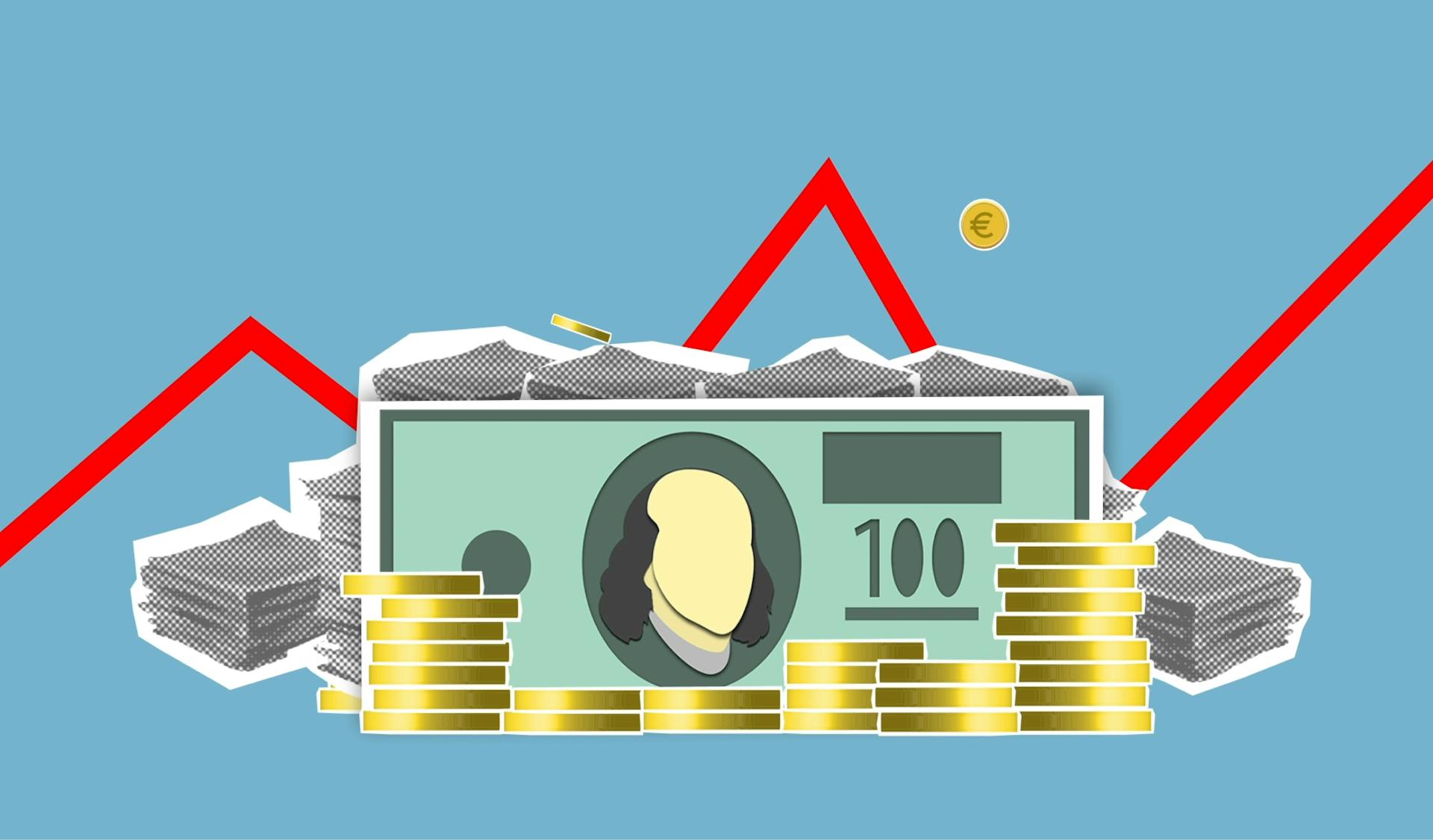
Paying taxes on your Roth IRA capital gains is a crucial aspect to understand, especially if you're looking to grow your retirement savings.
Roth IRAs are designed to be tax-free, but there's a catch - if you withdraw the earnings before age 59 1/2 or within five years of opening the account, you'll face taxes and penalties.
The good news is that Roth IRAs are designed to be tax-free, meaning you won't pay taxes on the capital gains if you wait until retirement age to withdraw the funds.
If you withdraw your contributions (not the earnings) at any time, they're always tax-free and penalty-free.
Roth IRA Taxation
You don't pay taxes on Roth IRA capital gains as long as you adhere to the rules for qualified withdrawals. This means that your investment growth is tax-free, and you won't have to report gains to the IRS.
However, if you withdraw earnings from your Roth IRA before age 59½ and before your account has been open for at least five years, you'll owe both income tax on the earnings and a 10% early withdrawal penalty.
The good news is that there are certain exceptions to this penalty, such as using the funds for a first-time home purchase or to cover qualified education expenses. But the earnings may still be subject to income tax, even in these cases.
Readers also liked: Non Qualified Deferred Comp Taxation
When to Pay Taxes on Roth IRA?
You'll face taxes on your Roth IRA earnings in certain situations. If you withdraw earnings before age 59½ and before your account has been open for at least five years, the withdrawal is considered non-qualified, and you'll owe both income tax on the earnings and a 10% early withdrawal penalty.
You can withdraw earnings tax-free and penalty-free if you use the funds for a first-time home purchase up to $10,000 or to cover qualified education expenses. However, the earnings may still be subject to income tax in these cases.
Making excess contributions to your Roth IRA can also trigger taxes. If your income is too high and you contribute to a Roth IRA anyway, exceeding the annual limit, the IRS could impose penalties on the excess contribution, including a 6% penalty on the excess amount for each year it remains in the account.
For 2024, the contribution limit is $7,000 if you're under 50, and $8,000 if you're 50 or older, so make sure to keep track of your contributions to avoid excess contributions.
Readers also liked: New Jersey Able Account
Roth IRA Taxation on Gains
Roth IRAs offer tax-free growth and withdrawals, but there are some rules to keep in mind when it comes to gains.
You don't owe capital gains tax on investment income inside your Roth IRA, because you contribute to it with after-tax money. This means your money grows tax-free over time and those gains are not taxed within the account.
Investments in a Roth IRA are subject to their own set of tax rules, and you don't have to pay taxes on investment income or assets that you buy or sell inside your Roth IRA. Qualified withdrawals of contributions and earnings from a Roth IRA are tax-free.
However, early or non-qualified withdrawal of earnings from a Roth IRA would be subject to taxes and a penalty, unless you meet certain exceptions. These exceptions include distributions for qualified higher education expenses, first-time home purchases (up to $10,000), unreimbursed medical expenses, and a few other exceptions as defined by the IRS.
A unique perspective: 12 Month Rule Prepaid Expenses
To take a tax and penalty-free distribution of Roth IRA gains, the account must be at least five years old, and the account holder must be 59½ years or older. This five-year rule starts on January 1 of the tax year for which you made your first contribution.
Here's a summary of Roth IRA taxation on gains:
By understanding these rules, you can maximize the tax benefits of your Roth IRA and avoid unnecessary taxes and penalties.
Capital Gains Taxation
In a taxable investment account, you owe capital gains tax on the profits you made from selling investments.
You don't owe capital gains tax just for owning these assets - it only applies if you profit from selling them.
Depending on how long you held an investment before you sold it, you would owe short- or long-term capital gains.
Short-term gains come from the sale of property owned one year or less and are taxed at your maximum ordinary income tax rate, which in 2023 is 37%.
Consider reading: How Much Is Capital Gains Taxes
Long-term gains come from the sale of property held more than one year and are taxed at either 0%, 15%, or 20%.
For most people, you will be in the 15% bracket if your income falls between roughly $42,000 and $460,000.
In order to determine whether your capital gains transaction will be subject to the short-term or long-term capital gains tax rules depends on the period of time the taxpayer held the asset.
You can avoid capital gains taxes by holding onto investments for more than a year.
Retirement accounts, such as traditional and Roth IRAs, are subject to their own set of tax rules, and each handles capital gains taxes differently.
The same principle applies to Roth IRAs - you don't have to pay taxes on investment income or any assets that you buy or sell inside your Roth IRA.
In a Roth IRA, your money grows tax-free inside the account, and the earnings in the account grow tax-free over time and those gains are not taxed within the account.
Qualified withdrawals of contributions and earnings from a Roth IRA are tax-free.
Curious to learn more? Check out: Llc Taxed
Roth IRA Basics
A Roth IRA can be a powerful tool for retirement savings, but it's essential to understand the basics. IRAs, including Roth IRAs, are tax-advantaged accounts used for retirement savings.
There are two main types of IRAs: traditional IRAs and Roth IRAs, each with distinct tax advantages. Generally speaking, all IRAs are subject to contribution limits and withdrawal rules, but Roth IRAs have strict income caps as well as other restrictions.
To get the most out of your Roth IRA, diversification is key. By spreading your investments across various asset classes, you can manage risk while still taking advantage of growth opportunities in a tax-free environment.
Here are two key strategies to consider:
- Contribute consistently: Regular contributions, especially during market dips, can significantly boost your account's growth.
- Choose dividend stocks: Dividend-paying stocks are a smart choice within a Roth IRA because the dividends can be reinvested tax-free.
IRAs, Explained
IRAs are tax-advantaged accounts typically used for retirement savings.
There are two main types of IRAs - traditional IRAs and Roth IRAs - and the tax advantages of each are quite distinct.
All IRAs are subject to contribution limits.
Roth IRAs have strict income caps as well as other restrictions.
IRAs offer a way to save for retirement while potentially reducing your tax burden.
Contribution Limits
For tax year 2024, the annual contribution limit for both Roth and traditional IRAs is $7,000, and $8,000 for those 50 or older.
You can only contribute earned income to an IRA, which includes taxable income like wages, tips, and commissions.
If you earn less than the contribution limit, you can only deposit up to the amount of money you made that year.
In the case of a spousal IRA, the working spouse can contribute to an IRA on behalf of a spouse who doesn’t have earned income.
Roth IRA Investments
Roth IRA investments offer a unique combination of tax-free growth and flexible withdrawals, making them an attractive option for long-term retirement planning.
You won't owe taxes on the growth of your investments as long as you adhere to the rules for qualified withdrawals. This means you can enjoy tax-free growth without worrying about taxes on your investments.
To maximize your savings, it's essential to contribute consistently to your Roth IRA, especially during market dips. Regular contributions can significantly boost your account's growth.
A unique perspective: Taxes on Sale of Business S Corp
One key strategy is diversification, which involves spreading your investments across various asset classes to manage risk. By diversifying your investments, you can take advantage of the growth opportunities available in a tax-free environment.
Dividend-paying stocks are a smart choice within a Roth IRA because the dividends can be reinvested tax-free, accelerating growth. This reinvestment doesn't count against your contribution limits, making it an excellent way to boost your account's growth.
Here are some tips for investing in a Roth IRA:
- Contribute consistently: Regular contributions can significantly boost your account's growth.
- Choose dividend stocks: Dividend-paying stocks are a smart choice within a Roth IRA because the dividends can be reinvested tax-free.
By following these tips and understanding the rules of a Roth IRA, you can make the most of your investments and enjoy tax-free growth for years to come.
Your Takeaway
A Roth IRA is a powerful tool for retirement savings and tax planning, thanks to its unique structure of post-tax contributions and subsequent tax-free growth and withdrawals.
The tax-free status of a Roth IRA is due to its unique structure, making it a compelling option if you expect to be in the same or higher tax bracket in retirement.
Roth IRAs offer unparalleled flexibility and freedom from taxes on gains, providing a tax-smart choice for savvy savers who plan ahead.
Your contributions are made with after-tax dollars, which means you've already paid income tax on the money you contribute to a Roth IRA.
This unique structure allows for tax-free growth and withdrawals, provided certain conditions are met, making Roth IRAs a valuable asset for long-term planning.
Sources
- https://www.themuse.com/advice/do-you-pay-capital-gains-on-roth-ira
- https://www.irafinancialgroup.com/learn-more/self-directed-ira/capital-gains-tax-and-the-self-directed-ira/
- https://www.sofi.com/learn/content/do-you-pay-capital-gains-on-roth-ira/
- https://www.nerdwallet.com/article/investing/roth-ira-taxes
- https://www.advantaira.com/blog/do-you-pay-taxes-on-gains-in-a-roth-ira/
Featured Images: pexels.com


